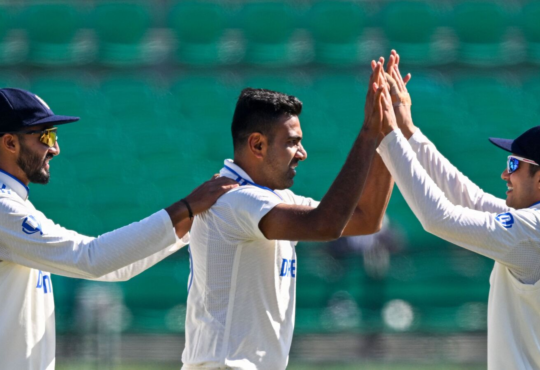
Interested in blogging for timesofindia.com? We will be happy to have you on board as a blogger, if you have the knack for writing. Just drop in a mail at toiblogs@timesinternet.in with a brief bio and we will get in touch with you.
Senior Advocate, Supreme Court of India. Author of `Choosing Hammurabi: Debates on Judicial Appointments’ (LexisNexis), `Appointing our Judges: Forging Independence and Acco LESS … MORE
The landing of the Chandrayaan-3 on the moon on 23 August 2023 is the climax of 5 decades of relentless hard work by an organization conceived way back in 1962 by India’s first Prime Minister Pandit Jawaharlal Nehru and generations of dedicated scientists. It is not a one off event. No matter how many counters are issued, the indelible imprint of the India’s Nehruvian science and technology edifice on the moon landing cannot be erased. From 2014 onwards, the narrative put in place is that the Nehruvian scientific model working on western systems is irrelevant. Thankfully the ISRO has remained unscathed in the culture war on science.
NEHRU’S ROLE IN CATAPULTING SCIENCE AND TECHNOLOGY
India’s first Prime Minister Pandit Jawahar Lal Nehru, having fought British imperialism for the major part of his life, understood how absence of advanced scientific movements made the eastern nations fall to the colonial powers. For him the development of state of the art science and technology was of paramount importance in nation building. He understood that India’s rapid advancement in science and technology was a sine qua non to rid of the shackles of post-colonial imperialism.
Nehru’s blueprint was fourfold. Firstly, to give primacy of place to shaping the school and college curriculums. Secondly, to replicate world-class science and technology institutions here in India. His celebrated visit to the Massachusetts Institute of Technology in 1949 ultimately led to the creation of the 5 iconic Indian Institutes of Technology at Kharagpur (1950), Bombay (1958), Madras (1959), Kanpur (1959), and Delhi (1961).
Thirdly, he inducted the greatest names in science and technology into the process of nation-building. Vikram Sarabhai, Sir C.V. Raman, Homi J. Bhabha, Sathish Dhawan, and S.S. Bhatnagar ran the premium institutes of scientific learning and research. Fourthly, he correctly assessed that science had no patrons and only governments could promote science. He enabled the creation of the Department of Atomic Energy (1954), the Bhabha Atomic Research Centre (1954), the Physical Research Laboratory (1947), the Indian Space Research Organisation (1962), the Council of Scientific and Industrial Research (CSIR) (1942), the National Chemical Laboratory, the National Physical Laboratory, the Fuel Research Station, the Glass & Ceramics Research Institute and the National Metallurgical Laboratory. The All India Institute of Medical Sciences (1956), Maulana Azad Medical College (1958), Govind Ballabh Pant Institute of Postgraduate Medical Education and Research (1961) and the National Institute of Virology, Pune (1952) were also his creations.
DOWNGRADING SCIENCE AT THE MOST IMPORTUNE MOMENT
In March this year, the Strategic Policy Institute (SPI), an Australian think tank, published its report which set the alarm bells ringing in the entire western hemisphere. It reported that China leads in 37 of the 44 critical technologies. The report detailed “All of the world’s top 10 leading research institutions are based in China and are collectively generating nine times more high-impact research papers than the second-ranked country (most often the US).”
This report of the SPI should have been India’s “Sputnik Moment”. However, the policymakers in the government appeared to be insouciant to the SIP Report. In less than two months, India’s education policymakers, instead of ramping up the education in science and technology, in a bizarrely regressive move, chose to delete the study of the periodic table, the theory of evolution, electromagnetism, and chapters on the sustainable use of natural resources from school textbooks. This move has essentially downgraded science for 38 million Indian children. Let us be clear, that the Chandrayaan-3 is certainly not the product of downgrading science, but the result of highest science standards maintained in the Indian education system.
WHAT INDIA CAN LEARN FROM THE RISE AND DECLINE OF ARAB SCIENCE
The current narratives denouncing the long established and existing education and science curriculums has a trajectory well known to history. The spectacular rise of science in the Islamic Arab world (661-1258 AD) and its near complete eclipse in 600 years is worth revisiting for India’s policy makers.
When Arab armies in the 7th and 8th centuries swept out from the Arabian peninsula, they annexed territories from Spain to Persia. The libraries of Cordoba and Toledo fell into their hands. The Arabs made good by acquiring and translating works of Plato, Aristotle, Democritus, Pythagoras, Archimedes, Hippocrates and other Greek scientific works. As a historian commented, ‘the intellectual meeting of Arabia and Greece was one of the greatest events in history’.
The Arab world between 661 AD to 1258 AD developed algebra, the magnetic compass, tools of navigation, our mastery of pens and printing and our understanding of how disease spreads and how it can be healed. It also gave names to the stars, mapped the earth and implanted the idea that science meant empirical inquiry and Al-Biruni, calculated and arrived at an accurate measurement of the Earth’s circumference as 24,900 miles, missing by only 200 miles, using his own trigonometric method.
PARALLELS BETWEEN INDIA TODAY AND THE ARAB DURING THE 12TH AND 13TH CENTURIES
But why did such advanced Arab science decline to the point of irrelevance? The reasons are many. Well before its geo-political decline, the Arabic world’s turn away from six centuries of Hellenistic (Greek) scholarship became a single most contributor. There are striking parallels between what is happening in current-day India and what happened in the Islamic world in the 12th and 13th centuries. Like narratives manufactured in today’s India, in the then Islamic world, science was viewed as an inconsequential western discipline.
The pro-science torch had been picked up by the Abbasid caliphs. Caliph al-Mamun sponsored a doctrine called Mu’tazilism that was deeply influenced by Greek rationalism which was spearheading the Arab lead in science and technology. In its place rose the anti-rationalist Ash’ari school led by al-Ghazali whose increasing dominance is directly linked to the decline of Arabic science. Ash’arite school gained traction amongst Sunni Muslims, who comprised the vast majority of the Muslim world. By the twelfth or thirteenth century, the influence of Mu’tazilism was nearly completely marginalized.
Dr. Bruno Guideroni, an astrophysicist at the National Center for Scientific Research in Paris, said ”The fundamentalists criticize science simply because it is Western.” Nehru was conscious of this argument and the inherent danger it posed to the advancement of science in India and responded, “Science has no frontiers. Nobody ought to talk about English science; French science … Science is bigger than the countries”.
Notwithstanding the success of Chandrayaan-3, every attempt is made to belittle the Nehruvian vision of creating world class scientific institutions and making the society adopt science as a way of life. The conflict of philosophy, policy and the consequent governmental responses between Nehruvianism and current day narratives is similar to the conflict between the progressive Mu’tazilism and the insular Ash’arism in the Islamic Arab world.
India is at the cross-roads in this age of tidal surges in science and technology rapidly altering almost everything on the planet. The civilizational achievements of the Nehruvian science and technology model are clear as daylight. Chandrayaan-3 is the very apogee and also the contemporary testimony of the achievement of Nehru’s vision of a dominant scientific India.
{{C_D}}
{{{short}}} {{#more}} {{{long}}}… Read More {{/more}}
Views expressed above are the author’s own.
Mind your language: Karnataka government sets a bad example via signboards
Christmas Is God’s Gift Of Shalom To Us
Too small a gift: GIFT City’s relaxation on prohibition is good but not enough; India needs sensible policies to attract global elite
2024’s big question: Ab ki baar, kitne paar?
New year resolutions that are bound to fail
Wheels within wheels
Wannabe NRIs: There is too little understanding of what’s driving the surge in Indians opting for illegal immigration
Five wishes for India: A to-do list for our politicians, policymakers
Wrestling with power: WFI’s suspension is an opportunity to clean up, deliver justice and catalyse accountability across federations
The system & the Sakshees
Interested in blogging for timesofindia.com? We will be happy to have you on board as a blogger, if you have the knack for writing. Just drop in a mail at toiblogs@timesinternet.in with a brief bio and we will get in touch with you.
Ruminations,TOI News,Tracking Indian Communities
Chennai Talkies
TOI Edit Page
Tell-tale
Copyright © 2024 Bennett, Coleman & Co. Ltd. All rights reserved. For reprint rights: Times Syndication Service







